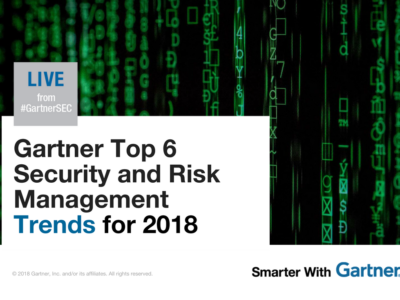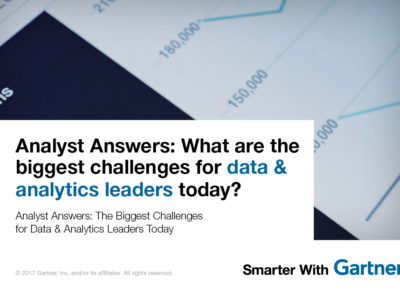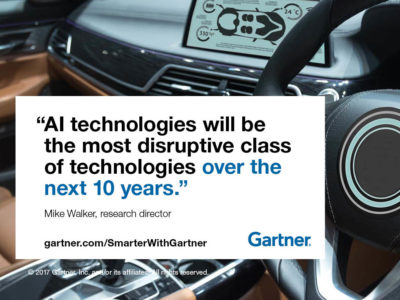Turn data and analytics scarcity into abundance.
History is filled with examples of using science and technology to transform scarcity into abundance. We’ve seen the exponential adoption of electricity, telephones, radio, and numerous other technologies. This has created a world of economic abundance for many.
The same can be said for data and analytics. Most of the time there seems to be an abundance of data, but a scarcity of trust in that data and the value and insight derived from it.
Opening the Gartner Data & Analytics Summit this week in Grapevine, Texas, Debra Logan, vice president and Gartner Fellow, and Kurt Schlegel, research vice president, told the audience of data and analytics leaders that to overcome these constraints, they should focus on building a data-centric organization, harness key trends and emerging technologies and drive outcomes that spearhead transformational business models.

“It’s not hard to imagine a world where data and analytic applications are used pervasively in every business process and every decision we make,” said Ms. Logan. “But to make that a reality, we need to help our colleagues everywhere in our organizations become comfortable working with data in their jobs.”
Ms. Logan and Mr. Schlegel laid out a three step plan to reach data and analytics abundance.
Step 1: Rethink Leadership
Organizations should start by considering the creation of a data office and the appointment of a Chief Data Officer (CDO). A recent Gartner survey of chief data officers showed that their main organization-wide responsibilities are oversight of analytics initiatives and data governance, followed by responsibilities for defining the analytics strategy for the organization and ensuring information reliability and value, i.e., information governance.
“The rise of the CDO role reflects the increasing need for overt leadership of data-driven digital business and championing the value of data assets,” said Mr. Schlegel. “However, the CDO role is one of influence more than of control. We still need to enable decentralized departments to play larger roles in the organizational strategy.”

Step 2: Modernize Technology
After leadership, a big part of achieving analytic abundance is handling the scale and variety of the data that is available. Traditional data management infrastructure approaches, such as data warehouses, batch data flows and relational databases, start to break down in the face of digital business requirements. Organizations must rapidly adopt architectures and technologies, such as data virtualization, that allow real-time data integration and access needs.
“By 2018, Gartner predicts that organizations with data virtualization capabilities will spend 40 percent less on building and managing data integration processes for connecting data assets,” said Ms. Logan. “This is key. Achieving a data management infrastructure capable of supporting digital business demands requires collecting and connecting. Collecting and holding data ensures the reliability of mission-critical processes, while connecting to data supports real-time requirements, deals with massive scale and distribution, and supports rapid experimentation.
Step 3: Maximize Your Business Contribution
One key to maximizing business contribution and harnessing this abundance of computing power and analytic expertise is transforming data governance into a business enabler. Data governance needs to change from centralized, top-down and dictatorial to localized, collaborative, agile, flexible and business-driven. At the same time data and analytics leaders must still achieve the trusted, shared and consistent views of data of master data management (MDM) and data quality initiatives.
“Most organizations are getting tuned into some of these challenges, but data and analytics leaders need to raise awareness further,” said Ms. Logan. “Decisions and responsibility for data governance must be brought closer to the point of action – where data is produced and consumed in the enterprise. This is partly the idea behind trust-related technologies like blockchain — put responsibility and authority at the point of data usage, and remove the need to rely on a single, centralized source of truth.”
Getting this right — context-driven policies and distributed authority and responsibility — is critical to delivering the trusted and high-value foundation of data that supports any use-case an organization’s leadership might have in mind.
Follow news and updates from the conference on Twitter at #GartnerDA.
Get Smarter
Data and Analytics Hub
Visit Gartner’s Data & Analytics Hub for complimentary research and webinars.
Gartner Data & Analytics Summit
Gartner’s global series of Data & Analytics Summits continues March 20-22 in London, May 23-24 in Tokyo, June 6-7 in Mumbai, and June 20-21 in Sao Paulo, Brazil.
Source: gartner.com/smarterwithgartner










